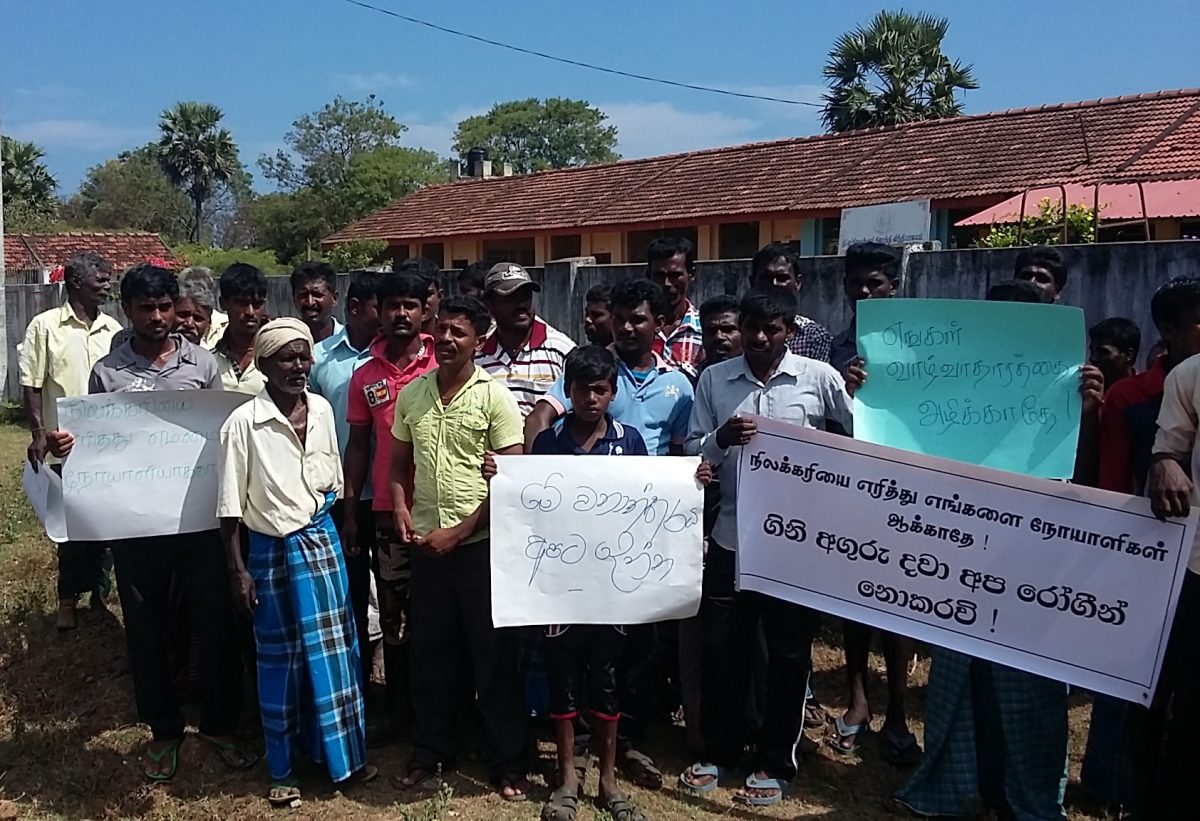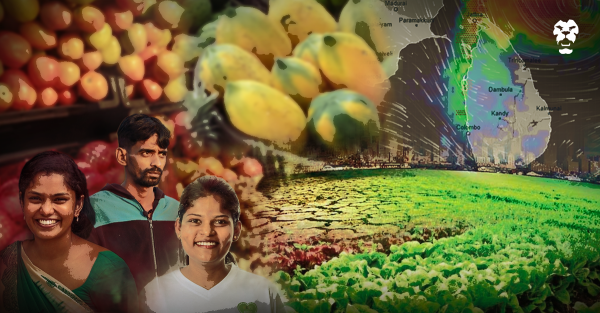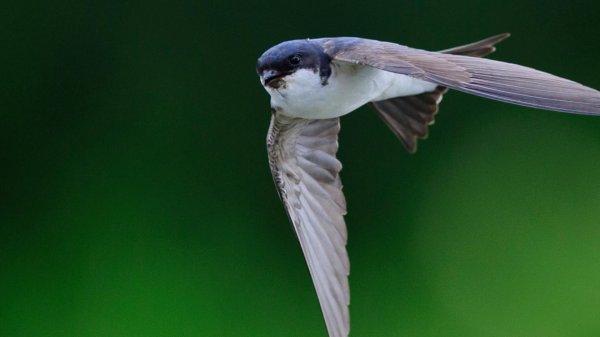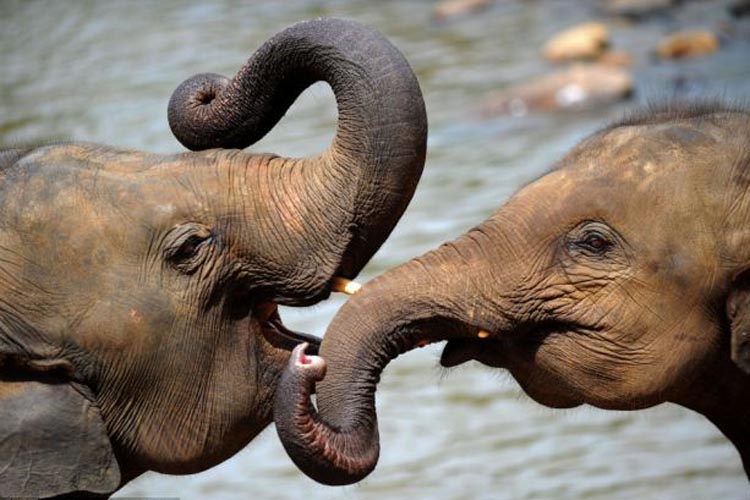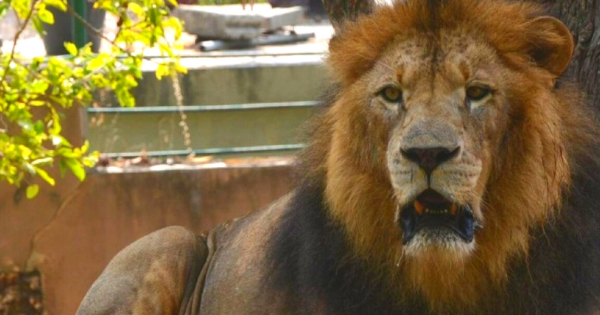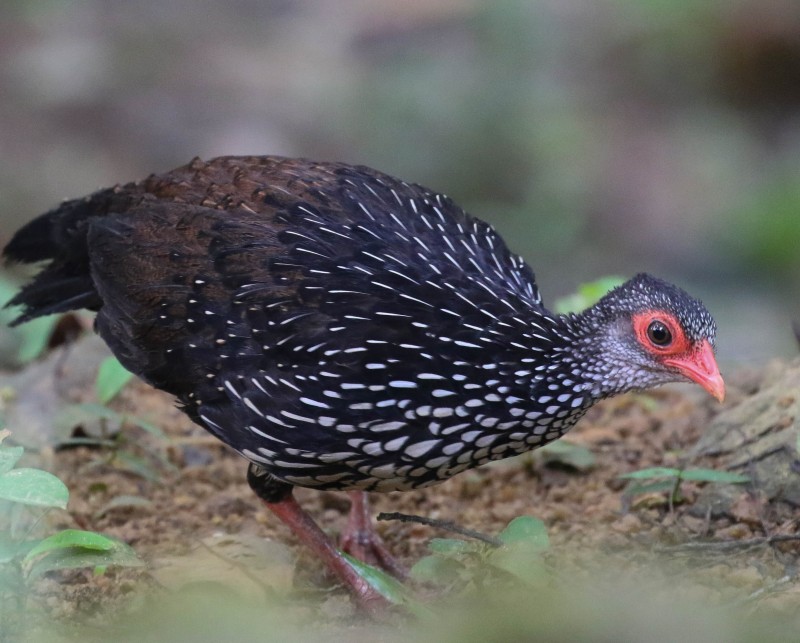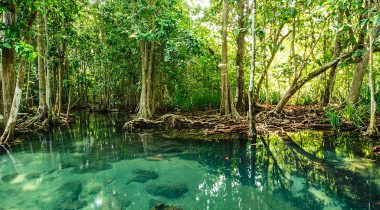
Anthropogenic global warming is an unfortunate reality. We have scientific facts, up-to-date trends of increasing temperatures, and even the most skeptical can feel a noticeable change in the climate. What we don’t often hear about is the specific impact that this phenomenon will have on Sri Lanka, and what we, as its people, can do to lessen it.
The Impacts
1. Rising Sea Levels
Being an island, Sri Lanka will be severely affected by rising sea-levels. The aftermath of the 2004 tsunami was proof of the extent to which our coastal areas are at risk in the event of natural disasters. According to the Second National Communication of Climate Change project, 34% of the national population resides in coastal areas, including in the capital city, and the majority of these areas make up tourist attractions and fisheries, most of which will have to be relocated should sea-levels continue to rise. Inland water systems will be influenced by contamination and saltwater intrusion of irrigation networks. Additionally, the beaches that currently experience soil erosion – noticeably visible in areas like Unawatuna, as reported by the Lonely Planet – will see rising sea-levels aggravating the intensity of the erosion.
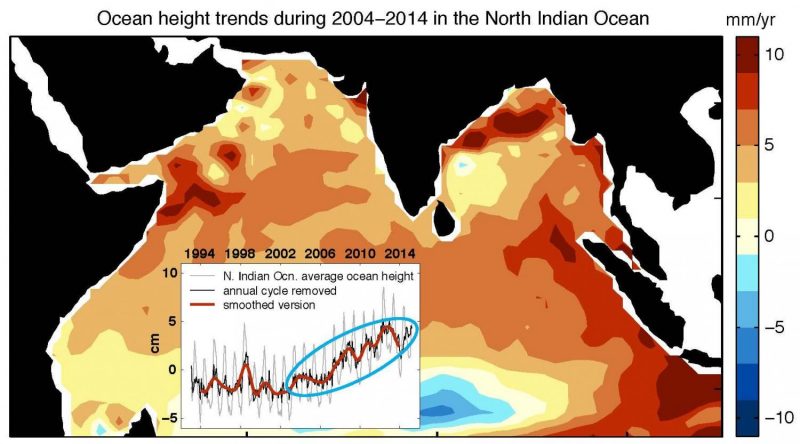
Heat building up in the northern Indian Ocean has enhanced the rate of sea level rise. This graphic shows changes in ocean height in the Indian Ocean (2004-2014). Darker reds indicate faster rate of rise. Credit: University of Hawaii at Manoa.
2. Changes In Monsoon
Monsoon trends, too, will see some significant changes. In 2011, the Second National Communication of the United Nations Framework Convention on Climate Change (UNFCCC) affirmed that, by 2050, there would be a 48% increase in rainfall for the Southwest Monsoon and a 29% decrease in rainfall for the Northeast Monsoon. Certain areas would show increased flooding and landslides – something we got all too familiar with in May 2016. This could increase the threat of drinking water contamination, and subsequently initiate an increase in waterborne diseases. Furthermore, soil erosion causes siltation of reservoirs and diminishes the capacity at which dams can operate. Currently, the Polgolla and Rantambe dams each respectively experience a 2.8% and 4.3% annual increase in the rate of siltation, according to Sri Lanka’s Ministry of Environment and Natural Resources.
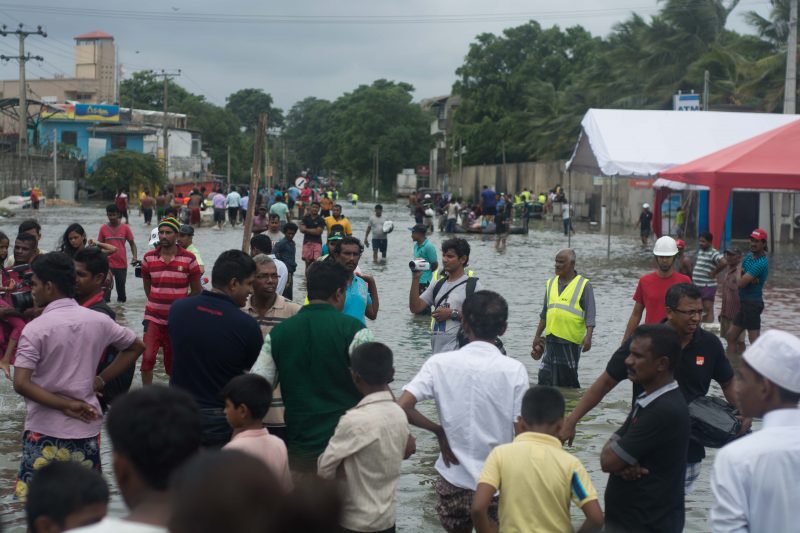
Sri Lanka has become all too accustomed to temperamental monsoons in recent times. This photo was taken during the floods in Wellampitiya in May last year. Image credit: Roar/Thiva Arunagirinathan
Meanwhile, other areas will experience harsh droughts and the death of crops, which would result in a surge in food prices, similar to what we have been experiencing since the beginning of this year. This is expected to affect the 1,394,324 people that live below the poverty line, while also increasing the percentage of this demographic.
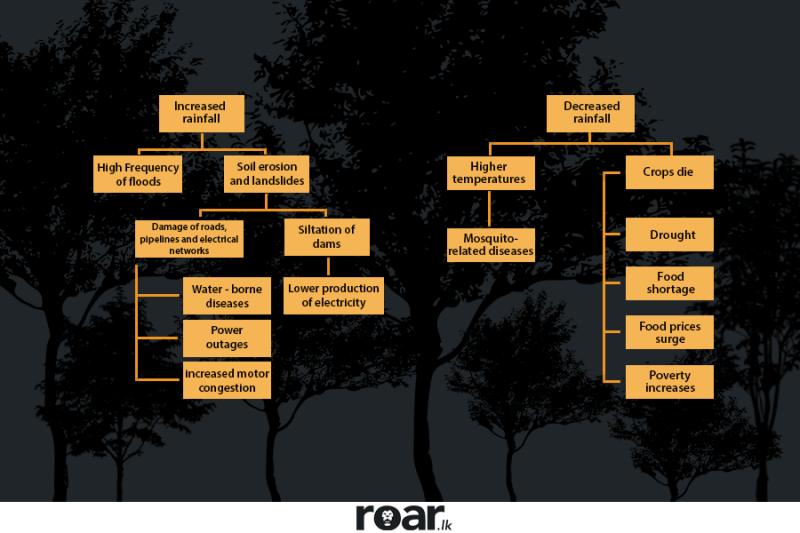
Effects of changing rainfall patterns due to climate change. Data courtesy SNC
3. Threats To Biodiversity
Sri Lanka is a globally recognised biodiversity hotspot, and is home to many endemic species of flora and fauna and the specifically-tailored ecosystems in which they thrive. Even the slightest change in the conditions of these bio-networks can initiate the extinction of entire species. As reported by the International Union for Conservation of Nature (IUCN) Red List of 2013, there are 571 threatened species in Sri Lanka, and this number is predicted to rise with the environmental damage that will be caused by aggressive climate change.
Doing Our Part

Recycling is one obvious step, but there many little changes we can also make in our daily lives to help battle climate change. Image courtesy wearesocialstarters.wordpress.com
Although putting an end to climate change altogether is too idealistic a goal at this point, there are many actions we could take to combat it.
Numerous organisations offer the chance to volunteer or donate to ongoing projects, such as educating communities about climate change and protecting endangered species. Several are dedicated to creating awareness and inspiring individuals to follow methods of prevention, adaptation, and mitigation against global warming ‒ one such international body is the Intergovernmental Panel on Climate Change (IPCC). Similar local bodies include: the Sri Lanka Wildlife Conservation Society, the Climate Change Secretariat under the Ministry of Mahaweli Development and Environment, the Munasinghe Institute for Development, and Sri Lanka Next.
If volunteering is not for you, there are still ways to contribute, with small changes you can make to your lifestyle.
To begin with, Sri Lankans have several wasteful habits regarding a vital resource: water. According to the National Water Supply and Drainage Board, nearly 40% of the water supplied to the city of Colombo is wasted. Conservation of water can start with a few small and easy steps:
- Turning off the tap when brushing your teeth or lathering soap on your hands.
- Taking shorter showers can be difficult when you’ve had a long day facing the heat, but it could greatly cut down on overuse.
- Check for leaks around the house. Often, simple faucet leaks can be fixed by tightening the neck of the tap – or calling a local plumber.
- Avoid flushing tissues and other trash down the toilet. This can waste up to 5 gallons of water with each flush, not to mention running the risk of clogging up your toilet.
- Rinsing razors and loofahs under running water is careless, so instead, try filling the sink with a few inches of water and cleaning the item.
- Household equipment like washing machines and dishwashers use up a lot of water, so it’s best not to use them unless they are holding a full load.
- A lot of water is wasted when running the hose while washing your car, too. If this is a habit you’re guilty of, then try this: use a pail of soapy water to clean the car, and then rinse it off with the hose.
If you’re willing to make some adjustments to your home, then you can also try:
- Installing water-saving shower heads.
- Plenty of studies say that showering in hot water can have a bad effect on your health; and it certainly has a bad effect on the environment because it takes up more electricity, unless you use a solar-powered heater.
- If you don’t mind doing a little gardening, then planting drought-resistant plants is great because they don’t require consistent watering.
- For those who already maintain gardens, you can cut back on watering until the plants really need it – and an easy way to find out how is to step on the grass. If it bounces back up then it needs watering.
- Adding organic materials to the plants can help the soil absorb the water and provide nutrients for the plants to grow well.

Consider planting a bougainvillea tree – not only would it make a pretty sight, it’s drought-resistant, too. Image courtesy edengardencentre.co.za
“Reduce, reuse, and recycle” is a slogan we’ve all heard several times over. As tedious as it seems to have to recycle something instead of just throwing it away, even the simplest contribution can go a long. There are many innovative ways to recycle and several websites and organisations that can help you learn how. In the meantime, here are a few simple tips to help you get started – and hopefully inspire you to come up with your own creative ideas on recycling:
- Reuse plastic bottles for DIY projects.
- Take your own reusable bags to the grocery store instead of using plastic bags every time (Most leading supermarkets in Sri Lanka sell eco-friendly, reusable bags).
- Be mindful of wasting paper. If you printed something out by mistake then don’t just throw it away – use it as scrap paper or try making recycled paper. If you’re done using a notebook but it still has a few pages left, then tear them out and make a new notebook.
- Use old clothes and rags for cleaning around the house, instead of using tissues or paper towels.
- Spend on rechargeable batteries which would be cheaper than regularly buying new ones in the long run.
- Avoid using your vehicle for short distance trips. Cycling and walking are great ways to stay healthy.
- Instead of throwing out food waste, use a compost bin to get rid of at least 30% of household waste in an eco-friendly manner.
If there’s really no way around throwing things out, then at least be sure to follow the new regulations of garbage separation that are being enforced. The simplest effort would really help make a change.
Since Sri Lanka makes a comparatively minor contribution to global warming, it is easy to argue that we are not responsible for it and therefore should not have to alter our way of life to prevent it. However, our country will be one of the most affected by the impacts of global warming, as stated in the 2016 Shockwaves report published by the World Bank. Therefore, even the smallest effort to combat climate change would go a long way in ensuring the wellbeing of our country and planet. If you’re wondering how one person can make a difference in an issue that requires a global effort, remember that by setting an example, you can inspire others to change their lifestyles and set off a chain reaction, which could, in turn, start a trend of green living that would potentially decelerate the rate of global warming.
Featured image courtesy geosrilanka.wordpress.com

